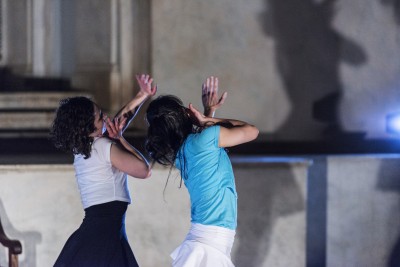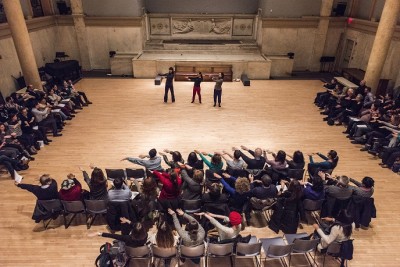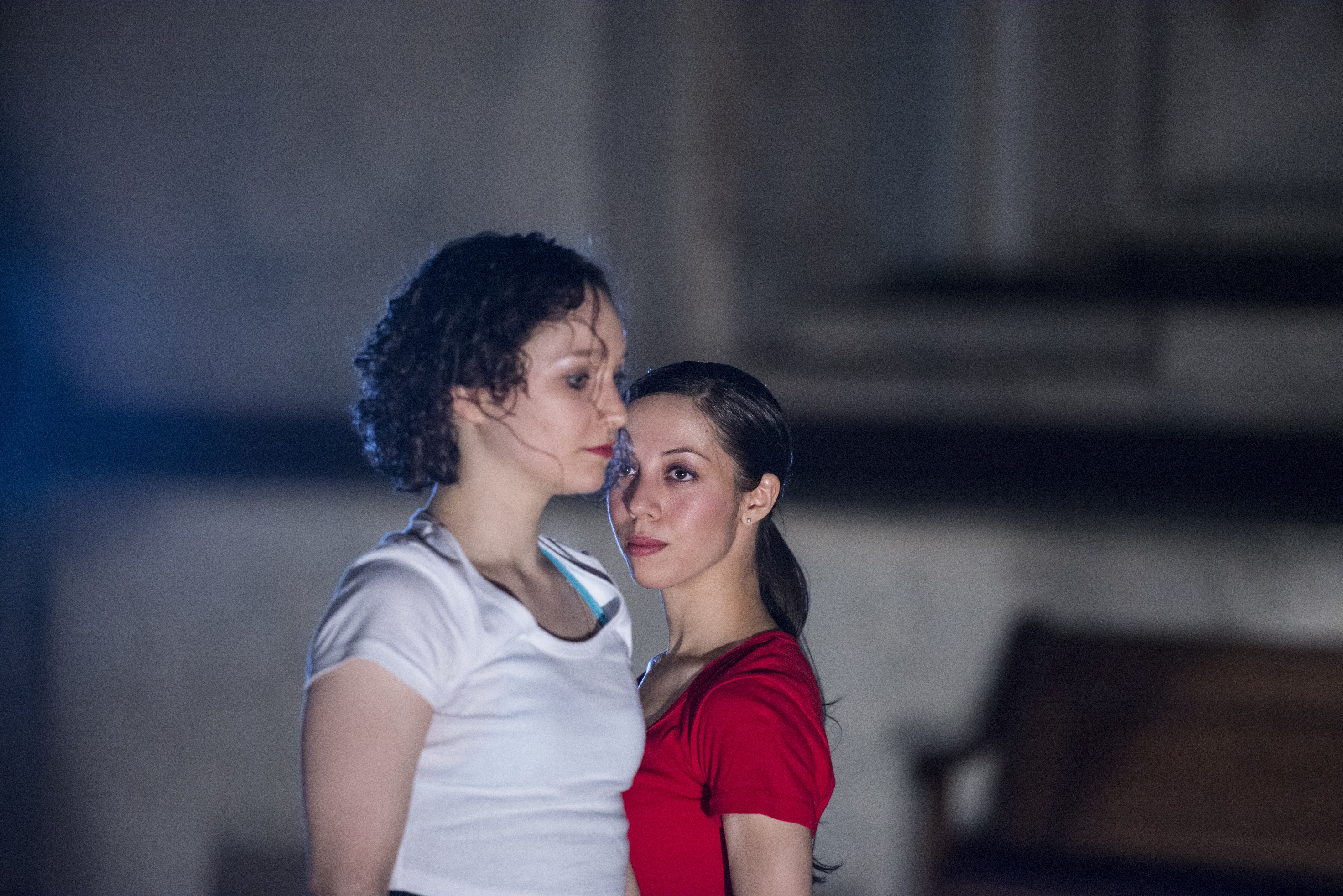
I’m a member of that niche demographic who is really excited by the idea of a dance performance inspired by Jewish text study, and luckily for me, this is essentially the premise behind Sydney Schiff Dance Project’s signature work Dry Bones: Resurrection of the Living.
Sydney Schiff graduated from Princeton University in 2010 with a A.B. in History of Science and a Certificate in Dance. She began Dry Bones while a 2012-2013 Arts Fellow at the Drisha Institute for Jewish Education in New York and has been developing it since. The goal of the piece, according to the program, is to follow “the personal journeys of three 21st century women striving to take ownership of inherited traditions” based around bringing the Biblical prophet Ezekiel’s famous vision of dry bones, long cherished as a metaphor for resurrection, into the present day.
A few months ago, Schiff emailed me to ask if I would review the performance of the full 60-minute piece January 28 at Judson Memorial Church in New York, and I demurred—I’ve studied (and produced) literature and film seriously, so I feel qualified to review those, but I don’t know the first thing about dance other than that I can’t do it with a straight face. But Schiff responded that I am exactly the audience she is aiming for.
From her first moment on stage, she proved she knows how to get people like me to understand dance. With a stage presence so warm and encouraging that it coaxed a room filled with mostly Jews to bypass their physical inhibitions, she had us all move our arms and hands into the D, R, and Y she designed according to her own kinetic alphabet to spell the word “DRY.”
“Perfect! Now let’s spell ‘Resurrection!’” she said. We laughed, but she was serious. So we moved our arms and hands all over to spell, or better, cause to happen, “RESURRECTION.” This exercise had a powerful effect on me. Much like the practice of Judaism itself, going through symbolic motions taught me how intentional movement can illicit a feeling or substantiate an abstract concept in a way that’s radically unconstrained from the bonds of conventional language. Creating then telling a story through these new alphabets, I now understood, is the essence of what dance performance is.
Perhaps sensing a breakthrough had been achieved, Schiff decided we were ready for the next step. She and her dancers, Stephanie A. Chun and Anna Schon, then went into a brief but elaborate dance routine then announced, “You’ve just read the prophecy of Ezekiel!”
Now we were ready.
The performance proper started with the women scattered on stage, moving as though they were constantly falling in suspended animation, against dimmed light and low music representing the state of their lives at the beginning of the story; they are dry bones, scattered and lost. They soon get a burst of energy, reflected in the score and in the lighting, and start moving together. And so we go through the ups-and-downs of the three women as they gradually, through a process of fits-and-starts, tap into their spiritual potentials and come to life, each in her own way.
The score composed by Cheryl Krugel-Lee danced along with the performers through brilliant mash-ups of Dvořák’s “New World Symphony” with variations on James Weldon Johnson’s “Dem (Dry) Bones,” creating a perfect musical commentary on the nature of the women’s experiences on stage, in turns frightening, reassuring, and encouraging.

The performance space at Judson Memorial Church is a wooden floor in front of a large stage with an antique wooden bench spanning about the middle third of the length of the seam where the stage rises out of the floor. Schiff utilized this space in many creative ways, for example using the stage to create distance between the dancers, and having one or more dancers sit on the bench and watch the others when they are in need of their own inspiration. The ornate stained glass above the stage and Gothic feel of the space further contributed to the sacred mood of the piece, however intentional.
Perhaps the most powerful scene of the performance involved clothes. The women started the performance in pastel camisoles and brightly-colored pants, either bright red or blue or with blood-red stripes. In the last third of the performance, Chun puts on a white skirt, and Schiff and Schon put on white and sky blue shirts, respectively. Schiff and Schon watch Chun dance in her skirt, then switch places, Chun watching Schiff and Schon dance in their shirts. In the end, each becomes fully clothed, getting what she is lacking from observing the other. A further beauty of this scene is how it serves as a synecdoche of the piece as a whole: Just as Ezekiel saw the bones, dry, naked, and bare, join together, clothe themselves in sinews and flesh, then come back to life infused with a new spirit, so too here, the women began their journeys scattered, alone, and stripped of purpose, then, by joining, journeying, and learning together, they become resurrected from spiritual death, more alive than ever before.
The central metaphor of Dry Bones: Resurrection of the Living is the reinterpretation of Ezekiel’s prophecy to spiritual seekers of today, yet in a meta-twist, Schiff’s interpretation of the ancient prophecy through dance is in itself a resurrection of the prophecy. By introducing a dance audience to Jewish text study as lovingly as she introduces a Jewish text audience to modern dance, she creates an open, spiritual experience for the soul, mind, and body with the potential to open each up to radically new sources of meaning, beauty, and exegesis. This audience member with a much stronger orientation toward Jewish text study, anyway, left with a spark of inspiration for what kinds of beautiful sentiments the rest of the body can express when so moved.
Derek M. Kwait graduated from the University of Pittsburgh and is editor in chief of New Voices.

